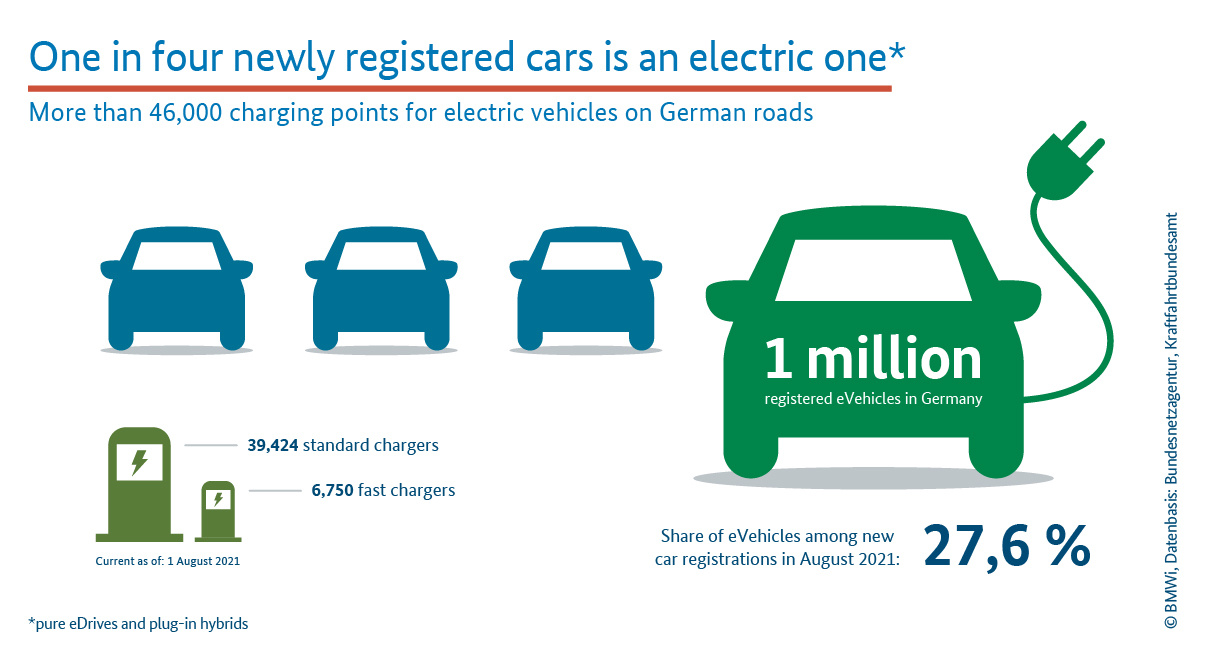The trend towards electric mobility
The objective is to have more electric vehicles on German roads, so as to make the transport sector more climate-friendly. We have now cracked the mark of 1 million electric vehicles. And there are more than 46,000 charging stations for them.
 © BMWi, Data from Kraftfahrtbundesamt, Bundesnetzagentur
© BMWi, Data from Kraftfahrtbundesamt, Bundesnetzagentur
Electric mobility is booming. If smartly connected to the grid system, it can become a major component of the energy transition. Prospective buyers of a new car have a difficult decision to make: they can choose between more than 70 models of electric cars. One in four newly registered cars in Germany is powered by electricity. This includes pure electric vehicles and plug-in hybrids, whose batteries can be recharged externally. By July 2021, more than one million electric vehicles had found their way from the factory to the roads of Germany. This figure is to rise to 7 to 10 million by 2030. According to the latest estimate, it might even be 14 million by then. The car manufacturers are fully on board. All German vehicle manufacturers now have ambitious electrification strategies in place.
By 2030, Germany wants to establish itself as a leading market and as the no. 1 provider of electric mobility. The charging infrastructure is also to be further extended. It is regarded as a key for the acceptance of electric vehicles, and for sales. As of today, there are already more than 46,000 charging points that are accessible to the public in Germany. The Federal Government’s Charging Infrastructure Master Plan is to guarantee that the charging infrastructure will cater to up to 14 million electric cars by 2030. The measures designed to ensure this include targeted funding and roll-out of the infrastructure network across the whole of Germany.

